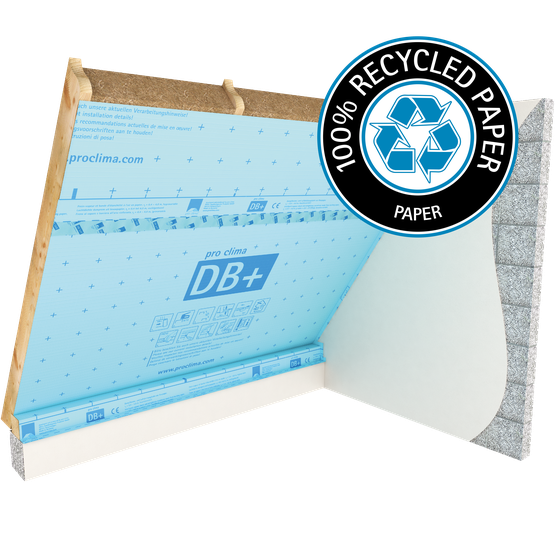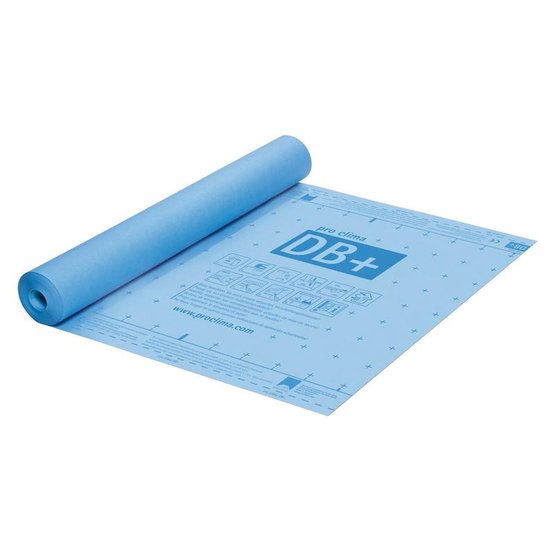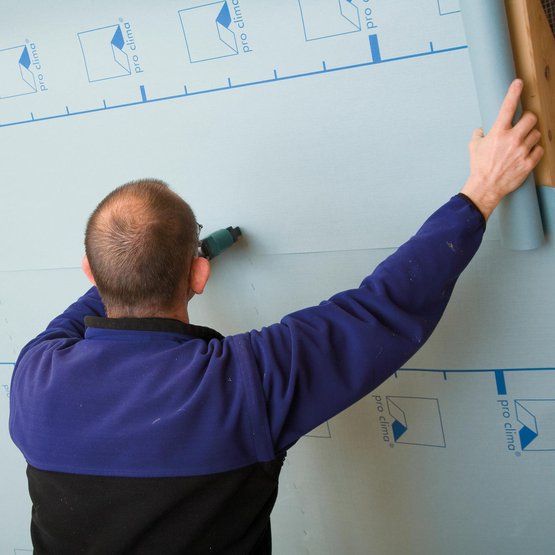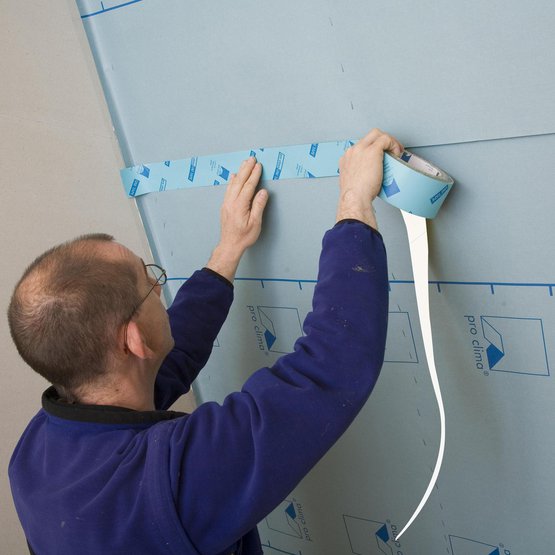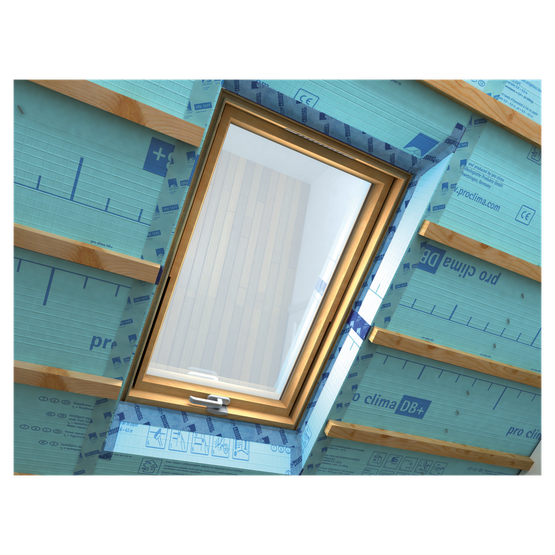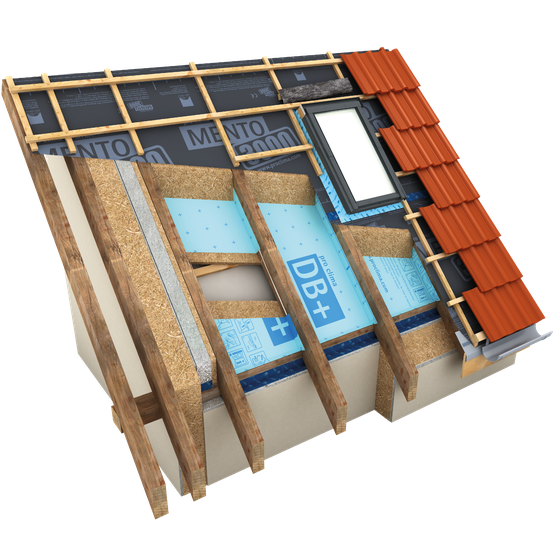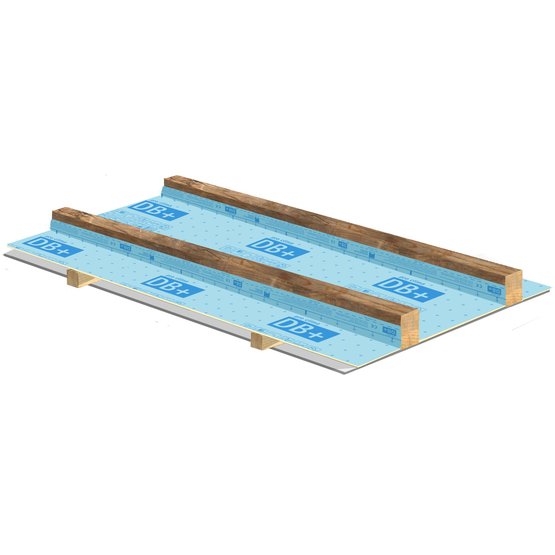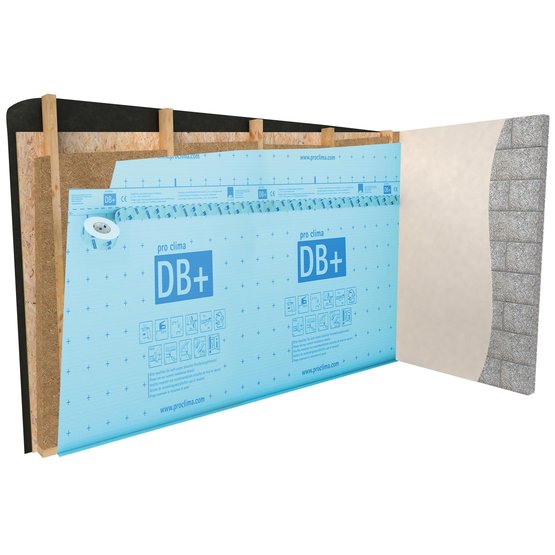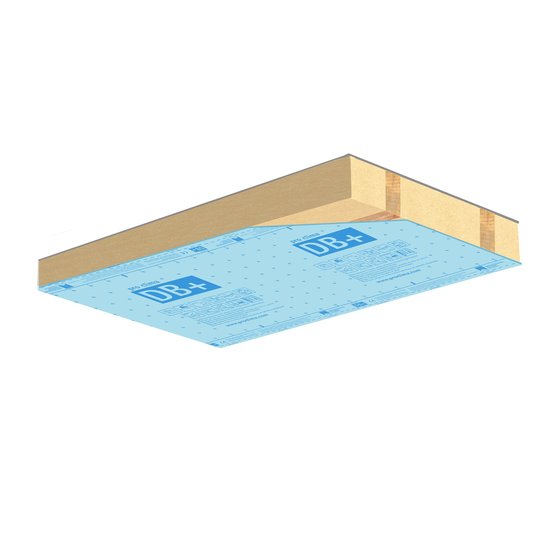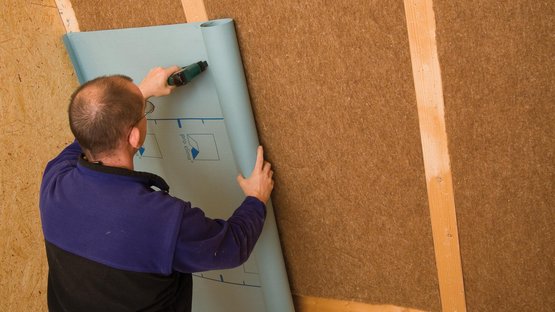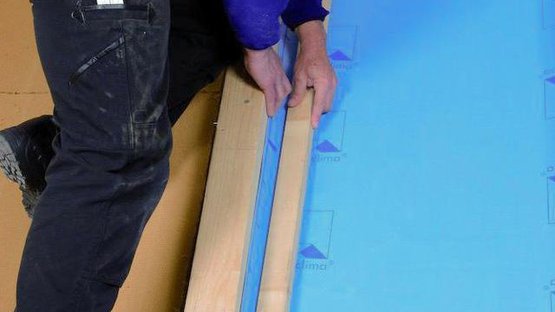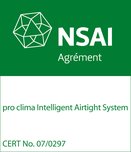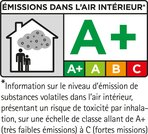Reinforced hydrosafe® paper-based vapour control membrane
Advantages
- Excellent protection against damage to structures and mould thanks to humidity-variable diffusion resistance
- Protected winter building sites thanks to hydrosafe® behaviour
- Can be combined with all fibrous insulation materials (including blown-in insulation)
- Ecological solution for sealing of the building envelope
- Excellent values in hazardous substance testing, has been tested according to the ISO 16000 evaluation scheme
Areas of application
Vapour control (alternate terms: vapour check or retarder) membrane for use on roofs, walls, ceilings and floors in combination with all fibrous insulation materials, including blown-in insulation, on structures that are open or closed to diffusion on the exterior, after appropriate design calculations.
Installation instructions
General conditions
pro clima DB+ can be installed with the printed or unprinted side facing the installer, either parallel or at a right angle to the sub-structure, for example, the rafters. It must not be stretched tight.
If installed horizontally (at right angles to the sub-structure) then the maximum space permitted between the rafters is 1 m (3 ft). After laying, it is necessary to support the weight of the insulation with lathing on the inside. The laths should be no more than 65 cm (2’ 2”) apart. If, when using insulation mats and boards, for example, you expect tension as a result of the insulation weight on the adhesive tape joins, an additional supporting lath should be placed on the overlap. Alternatively, the adhesive tape can be reinforced along the overlap by sticking strips of adhesive tape at right angles to the overlap every 30 cm (1 ft).
Airtight seals can only be achieved on vapour control membranes that have been laid without folds or creases. Ventilate regularly to prevent excessive humidity (e.g. during the construction phase). Occasional rush/inrush ventilation is not adequate to quickly evacuate large amounts of construction-related humidity from the building. Use a dryer if necessary.
To prevent condensation, DB+ should be taped or sealed so that it is airtight immediately after installing the thermal insulation. This particularly applies when working in winter.
Additional information on blown-in insulation
DB+ can also be used as a membrane for all types of blown-in insulation. Its reinforcement layer prevents tearing during the process of blowing in insulation filling. If installed paralllel to the sub-structure, it has the advantage that the overlap is supported on a firm foundation and is therefore protected.
To prevent condensation, the blown-in insulation should be installed immediately after installing the airproofing layer. This particularly applies when working in winter.



